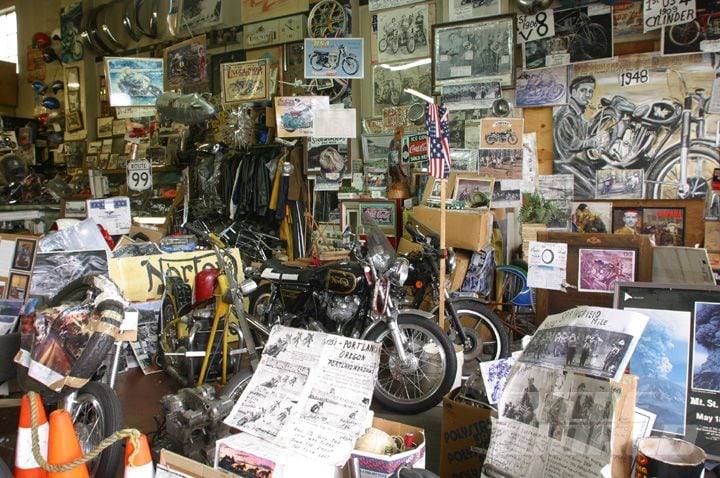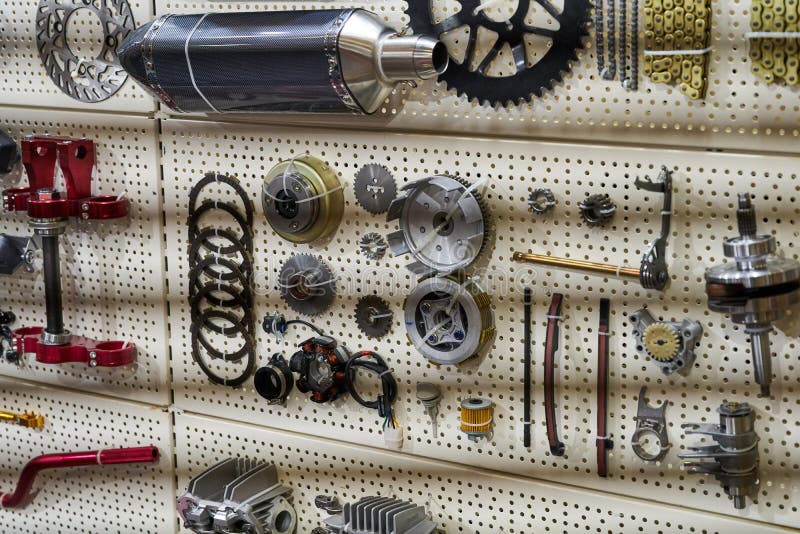Must-Have Motocross Gear: Raise Your Riding Experience Today
Must-Have Motocross Gear: Raise Your Riding Experience Today
Blog Article
Comprehending the Important Components of a Bike: A Comprehensive Guide for Lovers
For bike enthusiasts looking to boost their riding experience and guarantee their bikes run smoothly, recognizing the necessary elements of a bike is vital. Each aspect, from the engine's intricate workings to the important function of the braking devices, not only impacts performance but also security and comfort.
Engine Elements

The camshaft plays a critical function in managing the timing of the engine's valves, making certain the specific opening and closing required for efficient fuel and air consumption, along with exhaust expulsion. This timing is important to preserving optimal engine efficiency and efficiency. Furthermore, the carburetor or fuel shot system, relying on the motorbike model, is responsible for blending air with gas in the right proportion for combustion.
The air conditioning system, either air or liquid-based, works to preserve the engine's temperature level within operational limitations, stopping getting too hot and making certain durability - motocross gear nz. Each part, diligently made and incorporated, contributes to the seamless operation of the engine, specifying the bike's power outcome and general performance
Transmission System
Integral to the motorcycle's capability, the transmission system makes certain reliable power transfer from the engine to the wheels. This system makes up numerous critical parts, consisting of the clutch, gearbox, and last drive, each playing an essential function in equating the engine's power into activity. The clutch, normally operated by a hand bar, offers to involve and disengage the engine from the transmission, permitting smooth equipment modifications and controlled acceleration.
The gearbox, commonly referred to as the transmission proper, has a collection of gears that cyclists can manually change with to adjust the bike's rate and torque output. These equipments are organized in a sequence that allows the motorbike to increase efficiently and preserve optimum engine performance across different speeds. The majority of motorbikes make use of a sequential transmission, needing the cyclist to move equipments in a predetermined order.
Braking Devices
While understanding the transmission system is key to taking advantage of a motorbike's power, just as vital is the capacity to regulate and stop that power effectively, which is where stopping devices enter into play. Brakes are essential for security and efficiency, offering the motorcyclist with the necessary control to navigate different surfaces and conditions. Usually, bikes feature two kinds of braking systems: disc brakes and drum brakes.
Disc brakes are a lot more widespread in modern motorbikes due to their superior performance. They are composed of a brake hop over to these guys disc, caliper, and pads. When activated, the caliper squeezes the brake pads versus the rotating disc, transforming kinetic power into heat, consequently reducing the wheel. This system offers much better warm dissipation, regular performance, and improved quiting power, especially in wet conditions.
Alternatively, drum brakes, though much less common, are still located in some motorcycles. They work by pressing brake shoes versus the internal surface area of a drum affixed to the wheel. While typically less reliable in warmth dissipation and stopping power, drum brakes are easier and more cost-effective.
Comprehending these stopping systems' nuances allows riders to maintain their motorcycles properly and value the design that makes sure secure and efficient stopping.
Suspension and Guiding
Suspension and guiding systems are essential elements that significantly influence a bike's handling and experience convenience. The shock absorber, being composed of forks at the front and shock absorbers at the rear, soaks up road abnormalities, improving stability and control. Front forks, generally telescopic or inverted, compress and rebound to minimize influences, while rear shock absorbers preserve tire contact with the road, vital for grip and safety.
Steering, centered around the handlebars, connects the motorcyclist to the bike's directional control. The guiding head bearings make sure smooth procedure, allowing specific maneuverability. Correct positioning and upkeep of these bearings are critical for predictable steering reaction and minimizing biker fatigue.
The suspension's adjustability is an additional critical facet; preload, damping, and rebound settings permit personalization to suit numerous riding styles and conditions. This versatility is important for enhancing performance, whether browsing urban streets or dealing with rugged tracks. Advancements like electronic shock absorber provide real-time adjustments, boosting adventure high quality across varied surfaces.

Electric Systems
After making certain a regulated and smooth trip through reliable suspension and guiding systems, attention transforms to the electrical systems, a crucial element of modern motorbikes. These see here now systems play an essential function not only in starting the engine however likewise in powering numerous parts that improve the functionality and safety and security of the motorbike.
At the heart of a motorcycle's electric system is the battery, which stores electrical power necessary for beginning the engine and powering complementary systems - motorbike shop. The alternator or generator, combined with the rectifier-regulator, makes sure the battery continues to be charged while the motorbike functions, transforming mechanical energy right into electrical energy and maintaining voltage degrees
The ignition system, another essential component, is accountable for igniting the air-fuel mixture in the engine's cyndrical my response tubes. Modern motorcycles frequently utilize a digital ignition system, supplying better efficiency and reliability compared to conventional systems.
Illumination systems, including fronts lights, tail lights, and indications, are likewise vital, making sure exposure and safety for the motorcyclist. Additional electronic components such as sensors, control units, and presents add to sophisticated functions like fuel injection monitoring, anti-lock braking systems (ABS), and digital dashboards, even more boosting the riding experience.
Verdict
An extensive comprehension of a motorcycle's important components, including the engine, transmission system, stopping mechanisms, suspension, guiding, and electrical systems, is indispensable for fanatics intending to enhance safety, performance, and convenience. Proficiency of these aspects permits informed choices concerning upkeep and upgrades, eventually improving the riding experience. By integrating this understanding, cyclists can ensure their bikes operate at peak effectiveness and reliability, thereby maximizing both enjoyment and long life of their vehicles.
For bike lovers looking to raise their riding experience and ensure their bikes run efficiently, understanding the necessary elements of a bike is extremely important.Essential to the motorcycle's performance, the transmission system makes sure efficient power transfer from the engine to the wheels.While comprehending the transmission system is key to using a motorbike's power, equally crucial is the capacity to control and quit that power properly, which is where stopping devices come into play. Usually, motorbikes include 2 types of stopping systems: disc brakes and drum brakes.
A complete comprehension of a motorbike's necessary elements, consisting of the engine, transmission system, stopping mechanisms, suspension, guiding, and electrical systems, is important for lovers aiming to optimize safety and security, efficiency, and comfort.
Report this page